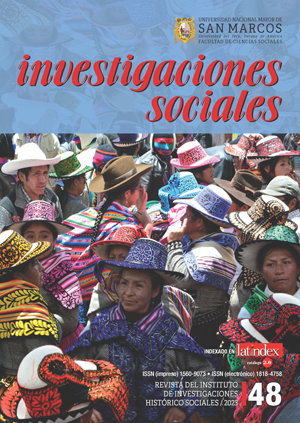Urban mobility and public transportation. Status on the order of interaction in the city
DOI:
https://doi.org/10.15381/is.n48.17706Keywords:
city, urban mobility, gender relations, transportAbstract
Urban mobility has become an important linking element for the city and its metropolitan spaces. The text has three objectives: the first of them takes as a theoretical basis the contributions of Gutiérrez (2010; 2012) to discuss urban mobility as a social travel practice, which combines needs and capacities to satisfy it and go further of an ontological vision that prioritizes arrival at places; the second objective seeks to reflect on the task of mobility in the urban structure of the city; and the third objective takes urban mobility as a theoretical approach to analyze its implication in unequal gender relations. The methodology was based on readings and critical reviews of studies on urban mobility carried out in Latin America. It reflects and concludes that, unlike transportation, mobility is a broader field that prioritizes the needs of people to travel, as well as their multiple records of trips not made, ineffective and planned. Mobility as an object of study allows analyzing its implication within urban planning in the city, and as a theoretical approach it makes visible power relations, gender inequalities and diverse subjectivities
Downloads
Published
Issue
Section
License
Copyright (c) 2023 Franco Evans Morales

This work is licensed under a Creative Commons Attribution 4.0 International License.
AUTHORS RETAIN THEIR RIGHTS:
a. Authors retain their trade mark rights and patent, and also on any process or procedure described in the article.
b. Authors retain their right to share, copy, distribute, perform and publicly communicate their article (eg, to place their article in an institutional repository or publish it in a book), with an acknowledgment of its initial publication in Investigaciones Sociales.
c. Authors retain theirs right to make a subsequent publication of their work, to use the article or any part thereof (eg a compilation of his papers, lecture notes, thesis, or a book), always indicating the source of publication (the originator of the work, journal, volume, number and date).













